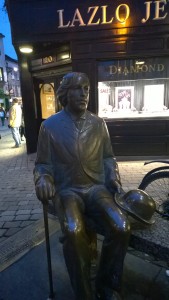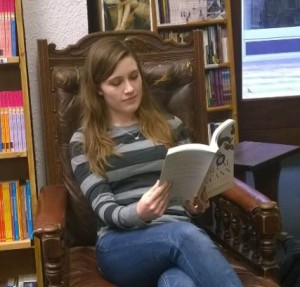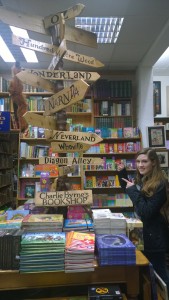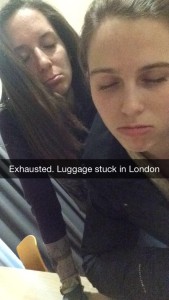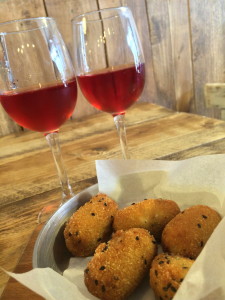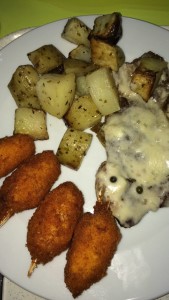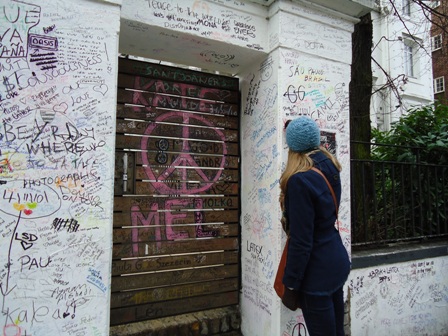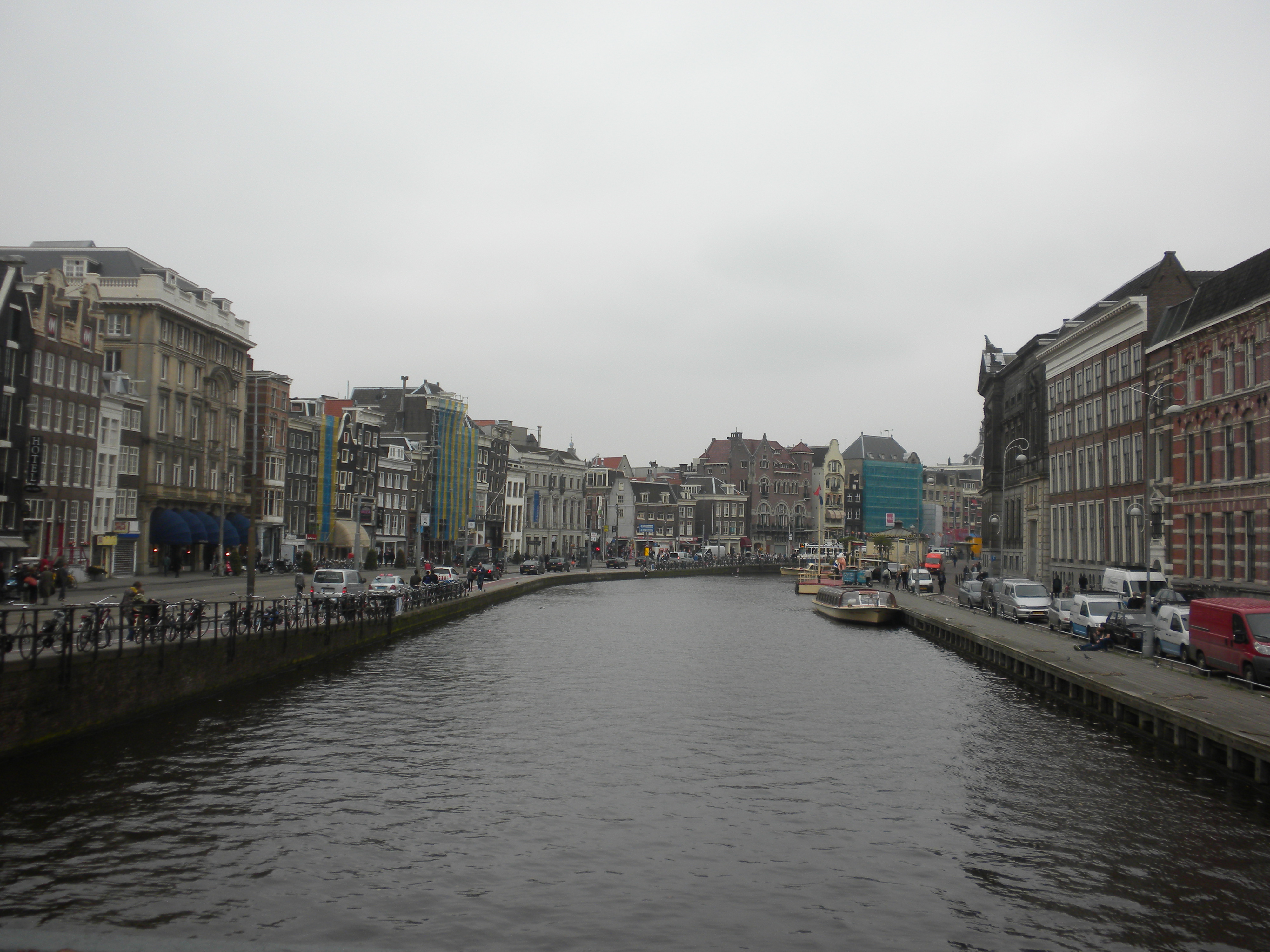As it would be assumed, Spain and the US have their fair share of differences. While there are an unlimited number of them, there are a handful of things that stick out more than others.
1. Time
Everything is much more relaxed. In certain situations, it’s perfectly acceptable to say you’ll meet somewhere at 8:30 and not show up until 8:35/40. For example, social outings are much looser than things like the starting time of class. That being said, even class is more relaxed. We have a start time of 9 everyday but if someone doesn’t come until 9:05 it’s still seen as on time, not five minutes late.
Siesta takes place every day from about 2-5 and is both a blessing and a curse. It’s nice to have a break to nap or get ahead on work, but it’s frustrating when I want to go shopping for groceries or whatever else I may need right after school. In the bigger cities that we went to, siesta is less common but still occurs with the smaller, non-touristy, family owned shops. In Ronda, almost everything closes except the hospitals (of course) and the few tourist shops and restaurants near the New Bridge.
2. Attire
EVERYONE WEARS PANTS. ALL. THE. TIME. It doesn’t matter what the temperature is, nor the time of day. ¾ of the people in Ronda are always in pants when you walk around town. In fact, only tourists wear shorts really so it becomes a dead giveaway. Every once in a while you’ll come across someone in shorts, but it’s definitely a rarity. It’s also frowned upon to wear sweatpants or athletic clothes out of the house unless you’re en route to the gym. To this day, I have yet to see any Spaniard wear any at all.
3. House Etiquette
One must not go barefoot in the host house. Wearing shoes is a sign of courtesy—typically they’re slippers, but for the most part I wear flip flops since the weather is warm which makes the house warm.
I have yet to see a window screen. The windows and the doors are almost always open, but without screens attached. I’ve made a game out of getting flies out of my room via the window. It’s been quite successful so far.
In the US, it’s a common thing to see showers that have a mount on the wall but can also be moved out of the holster. My host house has this kind of shower, but without the mount…I put it between my knees every day when I shampoo.
Toilets don’t have actual handles to flush, but rather buttons, which are the most common substitute. At my host house, it’s a metal piece on top of the water bowl that pulls upwards.
4. Eating Schedule and the Food Itself
Food hours are more spread out than ours at home. Breakfast is still in the morning around 8 or 9, but lunch happens during siesta (a break during the day where all shops close and reopen later, meant to be a rest for those who are working to go home and eat lunch and/or take a nap aka siesta) which is from 2-5. Dinner falls between 9 and 12 am. People at restaurants ate between 9-11, but my host family commonly eats around midnight. Meal size is also different. Breakfast is about the same, but lunch and dinner are switched. Dinner is smaller whereas lunch has a few courses. And of course, actual food eaten at each is different too. For breakfast, my host family eats toast with chopped tomatoes and olive oil. Lunch can be anything from tortilla de patatas to soup to sausage or fish or all of the above. Our host mom likes to feed us A LOT. Sometimes I skip dinner because I’m still full from the hours before.
The weirdest things I’ve eaten thus far have been pig cheek and bull tail, both very good and unlike any other type of meat I’ve had. The pig cheek is tender with a lot of flavor, but it’s mostly meat and not a lot of fat. The closest comparison I can give it is a cross between veal and filet mignon. I had the bull tail in a burger and it might be my favorite thing that I’ve tried to date here. It has more fat than the pig cheek but less fat still than an average steak. Bull tail is also very tender but not really comparable to other meats. It’s definitely one to try for yourself. Other people have eaten morcilla (mor-see-yuh) which is a type of sausage made of (get ready) cooked blood and fat. My friends have had mixed opinions of it. A few like it, but most can’t get past the composition or the aftertaste. I’m not brave enough to try it myself, so I can only go by what they say. I guess one can consider it to be an acquired taste.
MILK COMES IN A BOX! Think about a box that soup broth would come in at a grocery store, but a bit bigger. When you buy milk here, it’s on a refrigerate-after-opening basis which is so rare to me. It’s unheard of in the States to let milk sit out for more than a few minutes let alone indefinitely like a juice box. My host mom keeps a few boxes at a time lined up in the pantry. They blend in with the cereal boxes. Apparently it’s perfectly safe to do it the way that they do because it’s very pasteurized, but I don’t think it’s a custom I’ll adopt myself when I’m back home.
4. Atmosphere and Environment
The climate and geography are more similar to the southwest than the northeast where Penn State is. For the most part, the air here is dry with little humidity and greenness is to a minimum. There’s more brush than anything else. When we went to Marbella though, a beach on the south coast, the humidity increased because of the nearness to the water. The north is supposed to be very green as well, so my understanding is that the climate is overall varied just as the US happens to be. (I’m writing this in Madrid’s airport and looking out the window at the mountains and realizing that I probably won’t be here again for a very long time because I’m flying home in an hour and this is extra weird to be leaving after so long—I feel like this place is my second home and even though I’m starting to miss things at my actual home it’s weird to think that it’s all over and this is very sentimental and shall be reflected upon at a later date. TEARS)
5. Miscellaneous Observations
In the US, we pull doors open to enter a building and push them to exit. In Spain, most doors are push to enter and pull to exit. Strange stuff.
Festivities are more frequent and extravagant. There’s a parade at least once a week for a holiday.
Getting married earlier than 35 is considered very young. It’s also normal to live in your parents’ house around that age and older.
There is no set side of the street to walk on. While we walk on the right, Spanish walking has no structure and is more similar to that of pedestrian traffic in a city.
The strangest part to me about all of the things that I’ve noticed that are different than what I’ve been used to in the States is that they don’t seem too different to me anymore. As I wrote this post, I had to think about what wasn’t the same. And I feel like when I go home all of the things that I thought were normal before are going to seem strange. I don’t feel like I experienced a lot of culture shock when I arrived, but I think that the reverse will almost certainly happen. We shall see how it actually turns out.



